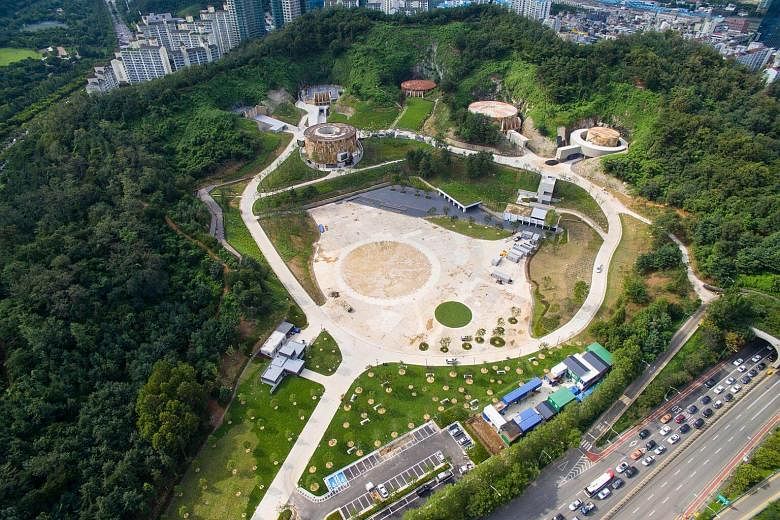SEOUL - For decades, it was a hidden oil depot that held enough reserves to power South Korea's capital city for a month, if needed.
The government facility - built in 1976 as a legacy of the 1973 oil crisis but closed in 2000 - has been given new life as a culture park.
Its numerous tanks have been transformed into exhibition and performance spaces, and its compound turned into a green zone.
The Oil Tank Culture Park, located in Mapo district in western Seoul, opened to much fanfare in September. The opening ceremony on Oct 14 drew a crowd of 30,000, with weeks of festivities lined up.
The park marked the last of a series of massive urban renewal projects in the district, started in 1998 by then Seoul mayor Go Kun to regenerate an area designated as the city's rubbish dump in the 1970s.
A nearby landfill has already been converted into Digital Media City, an IT hub for digital technologies.
Another landfill became the World Cup Park, a massive ecological paradise that draws thousands of visitors every weekend. It is located near Mapo World Cup Stadium, built to host the 2002 Korea-Japan World Cup.
Mr Yoo Young Bong, director of the park and landscape policy division of Seoul Metropolitan Government, told The Sunday Times that they are focused on urban regeneration projects to create more green spaces for residents to enjoy, as the city of 10 million people has very little unused land left.
"We built a lot of industrial facilities with Korea's rapid development, but as society progressed, people now need more green and recreational spaces. Moving into the future, we will be creating more eco-friendly zones, planting more trees, and even building green spaces underground," he said.
While urban regeneration projects can cost more than demolishing and building anew, Seoul officials said it is more meaningful to preserve a slice of history and engage residents in discussions on how to transform the space.
In the case of the 47 billion won (S$58.3 million) oil depot project, two tanks were torn down and rebuilt. One was turned into a glass dome while the other became an outdoor performance theatre. Two other tanks were refurbished, and the last one left intact.
A sixth tank-like structure, which houses a cafe, was constructed using recycled metals and geothermal energy harnessed from the ground to provide heating during winter.
"With regeneration, we were able to use an asset of the past to create harmony with the present and the future. This is no longer just an oil depot, but a culture park too," said Mr Heo Seo Goo, chief executive of Wondoshi Architects Group, the firm chosen to take on the project.
During a visit on a recent Sunday, this reporter saw a K-pop concert, a bazaar selling crafts and accessories, and food trucks offering fusion delights.
Hundreds of visitors - mostly families and couples out on a date - were strolling around the park and many had their DSLR cameras to capture the best autumn sights.
Retired landscape architecture professor Ahn Tong Mahn, who was there with his two grandsons, praised the "excellent" use of land.
"It was really unsightly before, but now looks so beautiful. And we can learn some Korean history here too," he said, referring to a media art display of the park's history in one of the tanks.
Student Park Jyung Tae, 26, who was there with his girlfriend, said they would love to go back again.
"Seoul city doesn't have many green spaces, so it's a good idea to turn abandoned facilities into parks," he said.


